Route 5
The Art of Tequila and Music Under the Sun
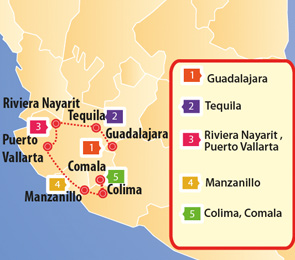 Guadalajara
Guadalajara
A cosmopolitan city that offers both traditional cuisine, typical dances, and modern art galleries; Guadalajara is the perfect combination between past and present. In the past years it has also proven that as a metropolis, there is no reason to envy Mexico City. A visitor can tour the imposing Hospicio Cabanas during the morning – with murals by Jose Clemente Orozco, have lunch at a fashionable spot, and at night go out to a gallery/bar, where the best local contemporary art is exhibited.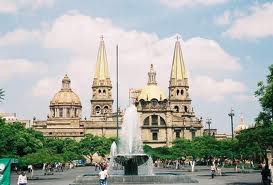
A good part of the iconography associated in the rest of the world with Mexico is typical of Guadalajara. Just to mention some images: tequila, mariachis, and charros. Many of the scenes from Mexican cinema’s golden age that have formed entire generations, and continue to identify all of us, happened in this city; the second most important in the country and center for economic, cultural and educational development. Not to visit it at least once is unforgivable for any traveler wishing to ‘know’ Mexico.
Tequila
If there is a tour in Jalisco that you can’t miss it is undoubtedly around Tequila, a region that boasts the designation of origin of the coveted drink by the same name. Only the product of blue agaves grown in these lands has the right to bear the name. Thanks to the popularity of the drink, each day there are more and more haciendas that open their doors to visitors, allowing them to discover the secrets behind the manufacture of this distilled beverage.
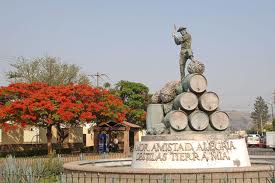 It goes without saying that the best producers of this drink, previously known as “mezcal wine”, offer tastings of their best products along with information about distillation processes, which always end with some myths about the best way to drink it. Exploring this region anytime is always good, but an oportune time to visit is between November 29 and December 13 when the Tequila Fair is held.
It goes without saying that the best producers of this drink, previously known as “mezcal wine”, offer tastings of their best products along with information about distillation processes, which always end with some myths about the best way to drink it. Exploring this region anytime is always good, but an oportune time to visit is between November 29 and December 13 when the Tequila Fair is held.
Under the shadow of the awe-inspiring, inactive volcano by the same name, the city of Tequila is a perfect starting point to reach its peak, only 16 kilometers away. Once at the peak, some 3,000 meters above sea level, in addition to glorious sights, you can admire flora specimen that are only found at this altitude, and the 60 different species of birds that fly the skies. The area is also visited by deer, coyote, armadillo and other animals.
Not just the buildings in Tequila are considered World Heritage by UNESCO. As strange as it may seem, the agave landscape of tequila’s motherland is one of the first cultural panoramas that have been included in the list of protected sites. Naturally, the former industrial facilities in the town of Tequila were also recognized as part of this heritage. This is another reason to approach and contemplate the emblematic blue sea of magueyes that floods this region.
When the Conquistador, Cristobal de Oñate, founded the village of Tequila in 1530, he never imagined that the stone walls of the Temple of la Purisima and the metallic archangels that guard it would be witness of its designation as a Magic Town. Beyond the famous national beverage, the city enchants because of its traditions and customs, like the blessing at nine every night, when the priest steps out after three bell tolls to bless the whole town, and everyone stops their activities to rise and look in that direction.
Not just the mythical image of a charro riding his horse, arriving at a neighborhood cantina to have some tequila – without a doubt a national symbol – is originally from Tequila, but also the jimadores, men devoted to the job of extracting the elixir from the Tequilana Weber blue variety agaves. And not to mention the transparent liquid that fills caballitos (small drinking glasses) all over the world. So if you are looking for a super Mexican tradition, you must take a tour around this place and its surroundings as soon as possible.
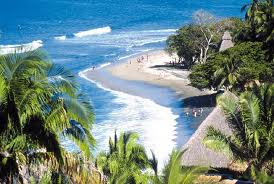 Riviera Nayarit
Riviera Nayarit
Extending into the large Banderas Bay (between Jalisco and Nayarit), this new tourist development guarantees its visitors spectacular landscapes, first world services and, above all, very nice vacations. In the past few years, top category hotels have opened their doors in the area known as Punta Mita, on the Nayarit side of the bay. There are also some small towns, like Sayulita, where you can still have a more authentic experience by coexisting with local inhabitants and enjoying a simple, yet delicious, meal.
If your goal is to try everything in Riviera Nayarit, you might as well give up. The offer is not only vast but also quite diverse. Depending on the destination, there will be more or less of a certain thing, but in practically all the corners of this long coast there are options that range from cosmopolitan restaurants with influences from faraway cuisines, to modest – but equally delicious – beach snacks made with sea products. The famous “botaneros”, a coastal version of cantinas, offer delicacies for the price of drinks.
Kilometer after kilometer of beaches, mostly peaceful, make up this exciting new destination for sun lovers. At least 16 stops make you want to stay here forever to visit one by one. There is also a bit of everything: luxury hotels, inns where you can watch your spending, improvised camping sites, good food, turtles and the possibility of enjoying all kinds of activities. Some places like Novillero, San Blas and Punta Mita are already well-known, but there are others that you will feel obliged to discover.
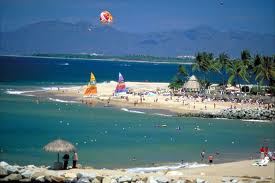 Puerto Vallarta
Puerto Vallarta
Years pass but Puerto Vallarta does not go out of style. A favorite for domestic and international tourists who are seeking a few days of peace with a view of the sea, Vallarta has options for every budget and all personalities. From those who want to party, to those who are chasing first-rate cuisine, there is something for everyone here. Also, because it is near Guadalajara, this has been a favorite for tapatio (Guadalajara inhabitants) weekends for many years.
A mixture of Asian, European and Latin flavors make Puerto Vallarta’s culinary offer one of the most complete in the country, competing with large cities. In addition to classical coastal dishes, like zarandeado fish and Mexican style seafood, there are restaurants that belong to European expats who have made the port their home. Perhaps because of this, the wine selection is also surprisingly broad. The best thing to do is to wait until sunset to eat like royalty in front of an extraordinary landscape of sea and green.
Between the largest bay in Mexico and the Sierra Madre, Puerto Vallarta’s rainforests are one of the best attractions in the area. Proof of this is the filming of many Hollywood hits, among which The Night of the Iguana (John Huston, 1964) stands out, based on the play by Tennessee Williams, starring Richard Burton and Ava Gardner. But besides these celebrities, whales star in their own movie from December to March along the coasts of this welcoming port.
Thanks to its picturesque architecture, Puerto Vallarta is not a beach destination like any other. Visiting Old Vallarta and strolling along its pier on Sundays to watch the locals pass by, is truly joyful. However, what one would expect at a beach destination is not lacking: boat rides, snorkeling, diving, and all sorts of water activities at sea. If this is too intense, we recommend sunbathing moderately with some coconut water at hand, or walking along one of the beautiful beaches.
Manzanillo
This is one of the most important ports in the Mexican Pacific; an important tourist industry was developed which combines perfectly with the city’s life. Although there are famous hotels which continue to be the arriving point for visitors, there are also small beaches that are less explored which are worth visiting. You should also try the local gastronomy, which is based in fresh products that arrive each day from the sea.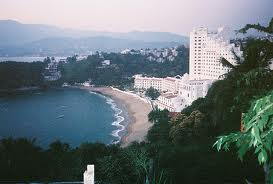
The University of Colima was in charge of setting up Manzanillo’s Archaeology Museum, and thanks to this there is the option of getting up from the beach and devoting some time to seeing valuable Pre-Hispanic objects from the state’s inland; it also has a Plastic Arts gallery. Another way to encounter art – different but very satisfying too – is at the handicrafts market, full of pieces from all over the republic as well as jewelry, and conches and shells typical of this port.
In Manzanillo, you can have a taste of everything from the sea. The proud Colima ceviche made with shredded marlin, sierra or grouper fish is the star at the table, but it competes with fish broth, borracho (drunk) octopus, birria and oysters a la talla. To spend your afternoon and withstand the heat, there are sorbets, fresh fruit waters, and the famous tubas, a beverage made with honey from a palm flower, prepared with fruits and peanuts, among other things. There is also international cuisine at restaurants with Italian and French influence.
Colima and Jalisco are separated at the area of Rio Mojo and heading there in a jeep, to visit the Chandiablo lagoon, will be awarded with delicious grilled meat on the river bank. In another direction is Cuyutlan lagoon, an ecological reserve with turtles, iguanas and even crocodiles, where thousands of children go every year to learn about these animals and why they are being protected. The greatest adventure is a boat ride to the mangroves at the Palo Verde swamp.
This is the ultimate family beach destination, and its two bays, Manzanillo and Santiago – less developed – offer many beaches where you can surrender to the sun. There are still more than 20 kilometers of virgin beaches to be explored, so you must run to discover them. On the highway to Colima, there are also “ebony beaches”, so-called because of their color; it is impossible to swim there, but the landscape justifies the trip and there are some places for food or to stay.
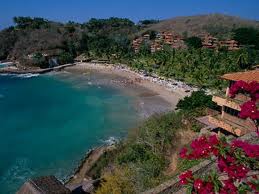 Colima
Colima
This small capital city nested between a beautiful natural landscape and an imposing volcano, watching over everything from its height, is one of the cities with the best lifestyle in the country. Here, education, health and work are not a problem, and this is something you can feel when walking the streets, which are peaceful and serene. There is also a general ambiance that invites you to rest and relax; something that can be combined with excursions to interesting places nearby, like the volcano itself or the archeological sites of La Campana and El Chanal.
The city of Colima stands out because it has rich and diverse handicrafts. Typical products here are red cedar furniture pieces decorated with oil painting; there are also couches made with calfskin, ceremonial masks, embroidery, copies of Pre-Hispanic ceramics, and basketry. It is a special opportunity to acquire unique pieces from one of the most prolific states for popular art. And it was probably all this creativity that also inspired Jorge Chávez Carrillo, the artist responsible for magnificent murals you can see in the Government Palace.
Comala
It can sound like a common place, but Comala is the nearly perfect representation of the Mexican small town, with its well-kept adobe walls and narrow streets that will instantly transport you to a different era. And Comala inhabitants, with good instinct, have understood how to take advantage of these tourist attractions. At the portals in the central plaza, you can enjoy all sorts of delicacies and regional traditional snacks. This is also the entrance to the majestic Colima volcano.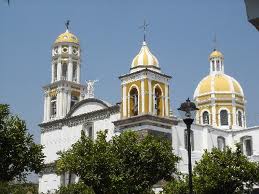
Definitely a Pueblo Magico, Comala lives in the imagery of Mexican people. Because of the cobble streets and adobe walls, and even the plaza full of lemon trees, inhabitants call it “America’s White Town”, and it is impossible to forget the adventures of Pedro Paramo. These landscapes, which inspired writer Juan Rulfo, through the experience of sitting by one of its portals, having snacks while listening to live mariachi music, with the characteristic harp from this area, make this visit indispensable.
The legendary town of Comala is the entrance to the Nevado de Colima National Park, with more than 9,000 hectares of ravines, gullies and lagoons where you can practice hiking or opt for a few days of camping. An excursion or a long field day among pines, oaks and firs gives you the chance to see some of the area’s fauna, populated by hawks, pumas, armadillos, deer, raccoons, lynx and other species.
To book a trip through the Route 5 Region, please send us an email to; info@weareonetravel.com or fill in the Contact Form on the right hand side of this page.



